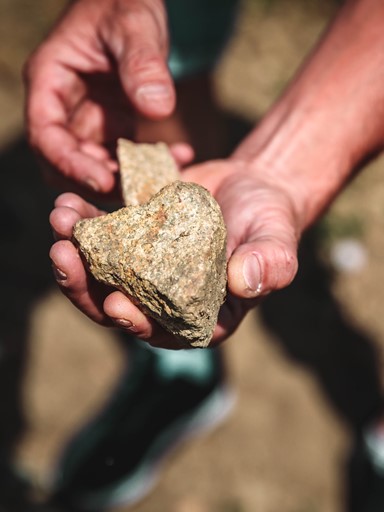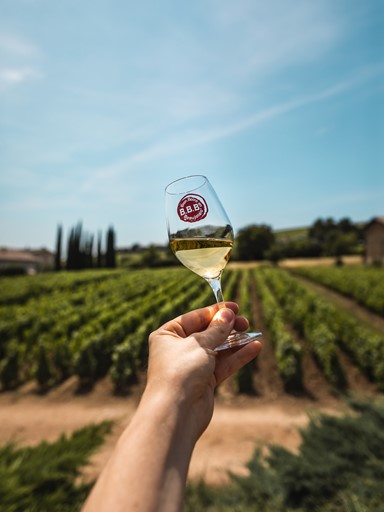
Beaujolais Blanc
Anthony Thévenet, Beaujolais, France
How Anthony Thévenet is challenging Burgundy with Beaujolais...
Beaujolais is one of the few wine regions in the world that is known almost exclusively for a single grape variety. For most wine lovers, a bottle of Beaujolais is invariably made from Gamay. From the simple Beaujolais Nouveau to the age-worthy Cru wines, the region represents ripe and drinkable reds that don’t take themselves too seriously.
Yet there is another grape that makes some serious Beaujolais wine: Chardonnay. The grape accounts for only about 3% of the vineyards in the AOC, but it is responsible for almost all wine labeled Beaujolais Blanc.
It should be no great surprise that there are pockets of Beaujolais that can make great white wine. The region was long-considered a part of Burgundy, and the northern part of Beaujolais bleeds into Burgundy’s prestigious white-focused Mâconnais region. Much of the soil here is ideal for Chardonnay, and varied expositions result in a range of ripeness levels that offer growers an array of possibilities. The grape actually thrives throughout Beaujolais on the many pockets of limestone scattered around the region. Chardonnay loves chalky limestone or clay-and-limestone soils, where it makes for tense, mineral, fresh wines.
While the reds of Beaujolais have been well-known for centuries, the production of white wine in this region has a history that reaches back just as long. But slowly over time the Chardonnay parcels were abandoned in favour of the trendier Gamay. But in the last decade, more attention has been paid to the possibilities of whites here. While climate change is of course a factor here, as in many areas of the vinous world, the increased production of Beaujolais Blanc is primarily the result of one consideration: consumers are discovering it is delicious. Sales in export markets have increased dramatically over the last few years, as Burgundy prices push many consumers seeking great Chardonnay to other markets. Beaujolais Blanc is an affordable, enticing alternative, especially when it is made with careful consideration by a skilled winemaker. Enter one of our favourite young producers – Anthony Thévenet.
Soil Searching
Anthony Thévenet has been surprising and delighting fans of Beaujolais since his very first vintage in 2013. As his reputation (and sales) grew, he began to long to make another wine, something his grandfather had introduced him to.
"For my grandparents, Chardonnay was everywhere. But we’ve almost lost it in the appellation. I have always loved the Beaujolais blanc, but I needed to find the right plot."
His search for that ideal parcel proved especially difficult. All of his existing plots featured the typical sandy soils of the region. This terroir is great for Gamay, but Chardonnay requires something different altogether. It needs alkaline soils with high pH. And the vineyards with those conditions are few and far between in the region, and hopelessly expensive. In 2021 he finally found the ideal spot, which thankfully was already farmed organically, and he managed to negotiate a favourable lease.
Anthony has just released his second vintage of his special Beaujolais Blanc made from these vines. He is very proud of the cuvée and admits he wanted to make it for his own use as much as for his customers!

“The blanc is not very well-known, or made by many people. Maybe only about 4%, but it is expanding little by little. The problem is you must find the right terroir. You can’t plant it (Chardonnay) on the granite, or the sand. It’s really something totally different.”
The Perfect "Vin d'Apéro"
Since it’s such a small production, most Beaujolais blanc is made through a co-op. But of course, Anthony wanted to craft his by his own hands. The wine is made in a somewhat Burgundian style; the grapes are direct pressed, undergo malolactic fermentation, and are then aged in 350 litre large old oak barrels with no lees stirring to avoid oxidation. Of course no sulfites are added and only native yeasts are used.
Beaujolais blanc is usually made in a slightly more approachable and refreshing style than Burgundy whites. Anthony’s cuvée follows that path, but don’t think it’s a simple wine! Flavours of citrus and stone fruits dominate, with layers of flowers and mineral undertones. The wine has a gorgeous gold colour and explodes with fruit flavours. Anthony calls it the perfect "vin d’apéro.” It's rounder than a white Burgundy, with a lighter texture, but still has enough structure and acidity to pair with a wide range of foods. For the moment, there are limits to the amount of Chardonnay one can grow in Beaujolais, but Anthony hopes more consumers discover these wines and that it encourages other winemakers to explore it's possibilities...
View Wine
"At our house, Beaujolais Blanc is a tradition.
We commence with a white, then go on to a red.”
Images by Matt Hickman
Words by Allison Burton-Parker










